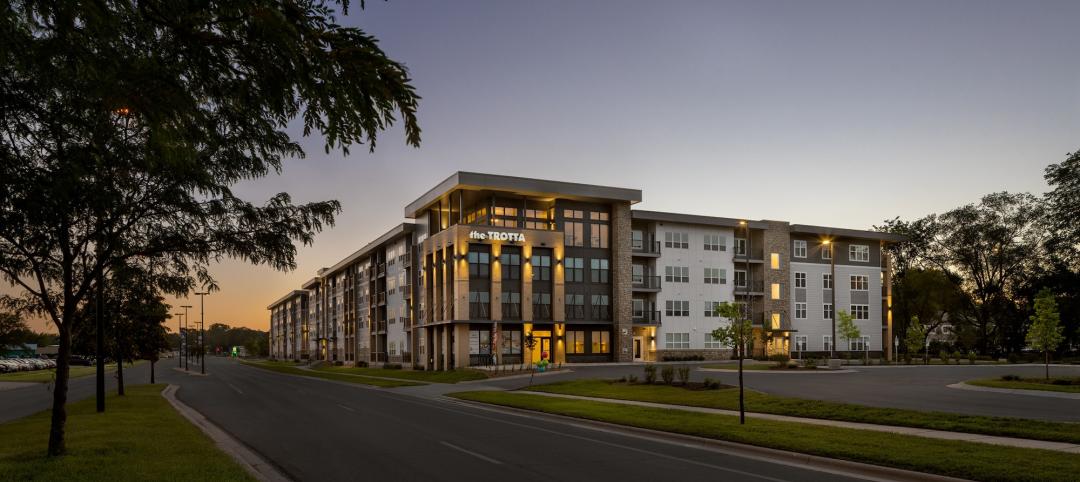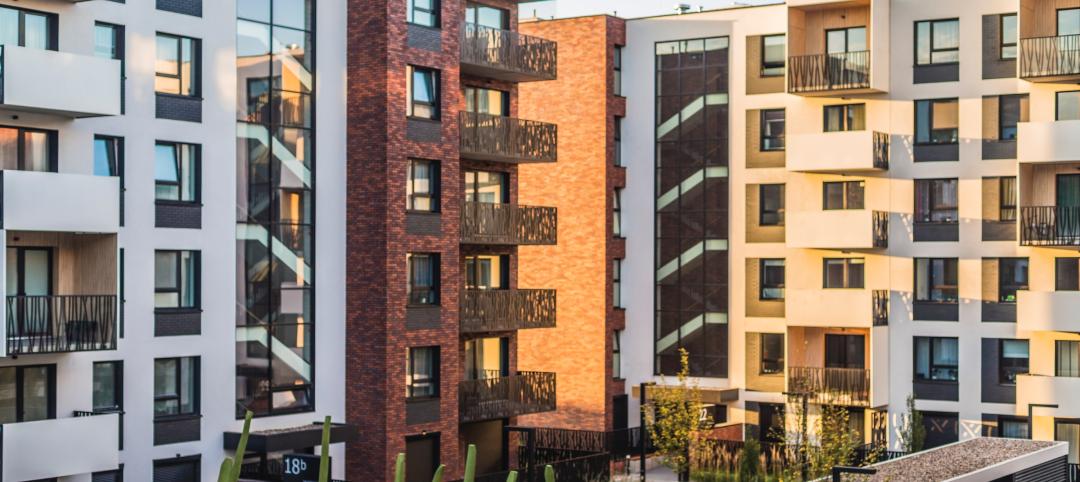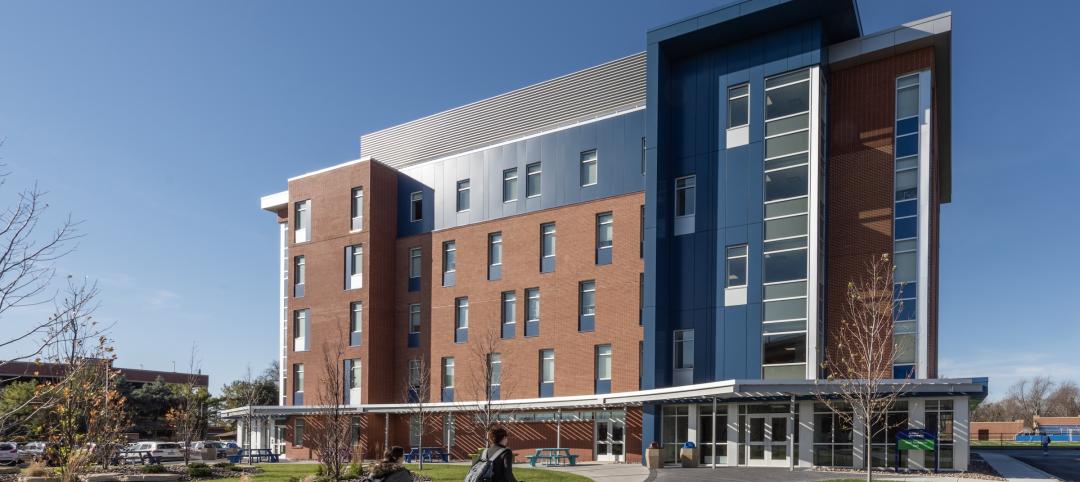The San Francisco Department of Building Inspection announced a series of new building code guidelines clarifying adaptive reuse code provisions and exceptions for converting office-to-residential buildings. Developed in response to the Commercial to Residential Adaptive Reuse program established in July 2023, the guidelines aim to increase the viability of converting underutilized office buildings into housing by reducing regulatory barriers in specific zoning districts downtown.
This effort is one component of the Mayor's recently announced 30x30 Plan to convert at least 5 million square feet of office space to approximately 5,000 units of housing by 2030. It also falls under the umbrella of the Roadmap to San Francisco Future – a comprehensive plan to reinvigorate downtown in response to the COVID pandemic. The new guidelines, detailed in Information Sheet G-29 and summarized in a resource sheet, clarify and, in some cases, reduce adaptive reuse building code provisions related to building envelope, exterior walls and openings, means of egress, ventilation, lighting, unit size, earthquake safety, and accessibility.
“There are many buildings that may benefit from these adaptive reuse guidelines,” said Department of Building Inspection Director Patrick O’Riordan. “The important thing is that we find ways to help developers convert these older office buildings without sacrificing residential safety requirements. These guidelines strike just the right balance and should add more certainty to the design and review processes.”
The Department of Building Inspection collaborated with the San Francisco Fire Department, San Francisco Planning Department, the Mayor’s Office of Economic and Workforce Development, and various community partners. An Office-to-Residential Task Force was established that included eleven experts from the fields of architecture, engineering, fire protection, building codes, historic preservation and real estate development, to better understand the economic roadblocks. Over the course of a year, these experts donated their time to attend dozens of meetings with these city agencies to develop the guidelines.
"By working together, we hope to unlock the ability to create more housing and re-energize San Francisco's downtown," said Skidmore, Owings & Merrill (SOM) Architect Lisa Follman, an American Institute of Architects (AIA) member who led the task force. “By establishing clear guidance, we hope to enable architects, engineers, and developers to find innovative design solutions to unlock the potential of these historic buildings.”
Clarifications of note include:
- Earthquake safety: provides multiple paths for review and approval based on building-specific considerations on a case-by-case basis.
- Exterior wall openings: creates a pathway for approval of more exterior wall openings (such as doors and windows) than allowed by the existing code if the proper design equivalencies are in place.
- Direct light: the new guidelines offer indirect light (such as natural light from one room illuminating an adjacent room through an interior window), sky lights or light courts as alternatives when direct light isn’t feasible in all habitable rooms.
- Elevator upgrades: the document codifies that existing low-rise buildings do not need to upgrade their elevators to meet the current code requirements for gurney size, hoistway construction, or Firefighters Emergency Operation–an upgrade that has been a substantial barrier to adaptive reuse of this building type.
Previously, developers were unable to accurately predict or calculate the upgrades needed to adapt a building for residential uses, dissuading the conversions from happening all together. In addition to offering a clearer picture of what is needed up-front, the new guidelines are expected to lower design and construction costs while reducing construction permitting times for downtown commercial-to-residential conversions. This effort builds on the progress San Francisco has already made to speed up housing-related building permit review and issuance times. In 2024 to date, housing-related In-House Review permits (featuring the more detailed plans, calculations and review needed for large or complex projects) are being issued a median of 165 days faster (35%) compared to 2022.
"Having converted a 400-foot office tower into 418 apartments at 100 Van Ness, we appreciate the critical importance of clear and timely code interpretations from DBI and the Fire Department when considering undertaking a conversion project," said Emerald Fund President Marc Babsin. "These new building code guidelines for conversions will be an invaluable tool for developers and will help to expedite the process of creating housing and activation downtown."
The Commercial to Residential Adaptive Reuse Task Group included Skidmore, Owings and Merrill (SOM); Emerald Fund; Page & Turnbull; Meyers+ Engineers; Tipping Structural Engineers; SDG, LLC; the Preview Group; and Simpson, Gumpertz & Heger (SGH) – in collaboration with American Institute of Architects San Francisco (AIASF); Structural Engineers Association of Northern California (SEAoNC); San Francisco Bay Area Planning and Urban Research Association (SPUR); and the San Francisco Chamber of Commerce.
Related Stories
MFPRO+ News | Jan 8, 2024
Canada turns to 1940s strategy to speed up housing construction
To address a severe housing shortage, Prime Minister Justin Trudeau’s administration has begun a housing construction strategy pioneered in the years after World War 2. The government aims to use a catalog of pre-approved home designs to reduce the cost and time to construct homes.
Self-Storage Facilities | Jan 5, 2024
The state of self-storage in early 2024
As the housing market cools down, storage facilities suffer from lower occupancy and falling rates, according to the December 2023 Yardi Matrix National Self Storage Report.
MFPRO+ News | Jan 4, 2024
Bjarke Ingels's curved residential high-rise will anchor a massive urban regeneration project in Greece
In Athens, Greece, Lamda Development has launched Little Athens, the newest residential neighborhood at the Ellinikon, a multiuse development billed as a smart city. Bjarke Ingels Group's 50-meter Park Rise building will serve as Little Athens’ centerpiece.
Resiliency | Jan 2, 2024
Americans are migrating from areas of high flood risk
Americans are abandoning areas of high flood risk in significant numbers, according to research by the First Street Foundation. Climate Abandonment Areas account for more than 818,000 Census Blocks and lost a total of 3.2 million-plus residents due to flooding from 2000 to 2020, the study found.
MFPRO+ News | Jan 2, 2024
New York City will slash regulations on housing projects
New York City Mayor Eric Adams is expected to cut red tape to make it easier and less costly to build housing projects in the city. Adams would exempt projects with fewer than 175 units in low-density residential areas and those with fewer than 250 units in commercial, manufacturing, and medium- and high-density residential areas from environmental review.
MFPRO+ News | Dec 22, 2023
Document offers guidance on heat pump deployment for multifamily housing
ICAST (International Center for Appropriate and Sustainable Technology) has released a resource guide to help multifamily owners and managers, policymakers, utilities, energy efficiency program implementers, and others advance the deployment of VHE heat pump HVAC and water heaters in multifamily housing.
Giants 400 | Dec 20, 2023
Top 100 Apartment and Condominium Construction Firms for 2023
Clark Group, Suffolk Construction, Summit Contracting Group, and McShane Companies top BD+C's ranking of the nation's largest apartment building and condominium general contractors and construction management (CM) firms for 2023, as reported in Building Design+Construction's 2023 Giants 400 Report.
Giants 400 | Dec 20, 2023
Top 70 Apartment and Condominium Engineering Firms for 2023
Kimley-Horn, WSP, Tetra Tech, and Thornton Tomasetti head BD+C's ranking of the nation's largest apartment building and condominium engineering and engineering/architecture (EA) firms for 2023, as reported in Building Design+Construction's 2023 Giants 400 Report.
Giants 400 | Dec 20, 2023
Top 160 Apartment and Condominium Architecture Firms for 2023
Gensler, Humphreys and Partners, Solomon Cordwell Buenz, and AO top BD+C's ranking of the nation's largest apartment building and condominium architecture and architecture/engineering (AE) firms for 2023, as reported in Building Design+Construction's 2023 Giants 400 Report.
Giants 400 | Dec 20, 2023
Top 40 Student Housing Construction Firms for 2023
Findorff, Juneau Construction, JE Dunn Construction, and Weitz Company top BD+C's ranking of the nation's largest student housing facility general contractors and construction management (CM) firms for 2023, as reported in Building Design+Construction's 2023 Giants 400 Report.


















